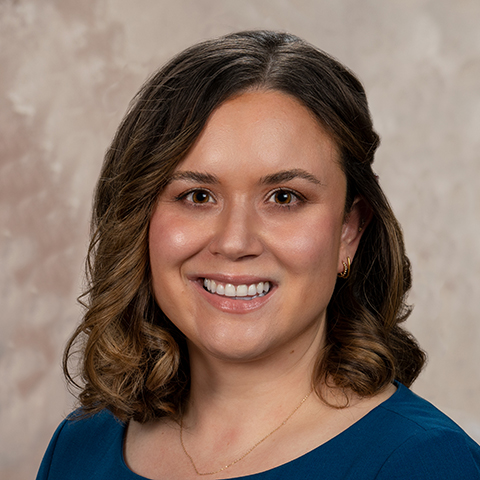Skin Cancer
What is skin cancer?
Skin cancer forms in the tissues of the skin. It’s the most common type of cancer. There are several types of skin cancer. Most skin cancers form in older people on parts of the body exposed to the sun or in people who have weakened immune systems; however, skin cancer (particularly melanoma) is the leading cause of cancer death in young adults.
Skin cancer treatment in Southwest Florida
The Lee Health Cancer Institute is helping patients all around Florida. If you are traveling from Naples, Bonita Springs, Estero, Cape Coral, Fort Myers, or Port Charlotte, we can help you navigate the next steps in treatment options. To learn more, call the facility at 239-343-9500
What are the symptoms of skin cancer?
Skin cancer develops primarily on areas of sun-exposed skin, including the scalp, face, lips, ears, neck, chest, arms, hands, and the legs. But it can also form on areas that rarely see the light of day — your palms, beneath your fingernails or toenails, and your genital area.
Skin cancer affects people of all skin tones, including those with darker complexions. When melanoma occurs in people with dark skin tones, it's more likely to occur in areas not normally exposed to the sun, such as the palms of the hands and soles of the feet. Read more from the Mayo Clinic
What is the difference between squamous cell carcinoma and basal cell carcinoma?
Skin cancer that forms in squamous cells (flat cells that form the surface of the skin) is called squamous cell carcinoma. Most often, squamous cell carcinoma occurs on sun-exposed areas of your body, such as your face, ears and hands. People with darker skin are more likely to develop squamous cell carcinoma on areas that aren't often exposed to the sun.
Squamous cell carcinoma may appear as:
- A firm, red nodule
- A flat lesion with a scaly, crusted surface
Skin cancer that forms in the lower part of the epidermis (the outer layer of the skin) is called basal cell carcinoma. Basal cell carcinoma usually occurs in sun-exposed areas of your body, such as your neck or face.
Basal cell carcinoma may appear as:
- A pearly or waxy bump
- A flat, flesh-colored or brown scar-like lesion
- A bleeding or scabbing sore that heals and returns
Melanoma skin cancer signs and symptoms
Skin cancer that forms in melanocytes (skin cells that make pigment) is called melanoma. Melanoma can develop anywhere on your body, in otherwise normal skin or in an existing mole that becomes cancerous. Melanoma most often appears on the face or the trunk of affected men. In women, this type of cancer most often develops on the lower legs. In both men and women, melanoma can occur on skin that hasn't been exposed to the sun.
Melanoma can affect people of any skin tone. In people with darker skin tones, melanoma tends to occur on the palms or soles, or under the fingernails or toenails.
Melanoma signs include:
- A large brownish spot with darker speckles
- A mole that changes in color, size or feel or that bleeds
- A small lesion with an irregular border and portions that appear red, pink, white, blue or blue-black
- A painful lesion that itches or burns
- Dark lesions on your palms, soles, fingertips or toes, or on mucous membranes lining your mouth, nose, vagina or anus
Are there ways to prevent skin cancer?
Most skin cancers are preventable. To protect yourself, follow these skin cancer prevention tips:
Apply sunscreen in peak sun hours
Are you planning on lots of outdoor activity either for your job or your weekend plans? Use a water-resistant, broad spectrum sunscreen with an SPF of 30 or higher, the SCF says. Apply 1 ounce of sunscreen (about the amount that fills a shot glass) to your entire body 30 minutes before going outside. Then reapply every two hours or immediately after swimming or excessive sweating, the SCF says.
The American Academy of Dermatology stresses that you shouldn’t forget your neck, face, ears, tops of your feet, and legs. Don’t forget your lips. Thinning hair? Put some sunscreen up there or wear a hat. And yes – you can get sunburned when it’s cloudy.
Cover your bases and your body
Here’s something you probably didn’t know: The damage the sun does to every exposed part of your body is cumulative over your lifetime, according to SCF experts. That’s pretty scary. And we don’t often think about all those everyday activities, chores, errands that put us in harm’s way. Here are some ways to cover up when you are just casually out and about:
Wear a broad-brimmed hat instead of a ball cap at the game to cover your face and neck as much as possible. Does it look as good as the team’s cap? Of course if does. Keep your sunglasses on during driving or on your morning walks or runs. Be sure your sunglasses are certified for blocking UV rays. Cover your arms and legs as much as possible with light, loose-fitting clothing, and take some time to understand what fabrics your clothes are made of. UV light can often penetrate clothes with bigger fibers. Twill, tweed, and denim are tightly woven fabrics, experts say. Synthetic fibers – lycra, nylon, acrylic, and rayon -- are more protective than cotton and linen. Remember that the more vivid the color, the greater the protection.
Stay away from tanning beds
Let’s tackle tanning beds. We may believe that tanning is attractive, but remember: That smooth bronzing of the skin? That’s cell damage caused by ultraviolet radiation. Some research suggests that frequent tanning results in feelings of elation or relaxation – kind of like smoking or drinking –which may lead to more tanning.
That means it acts more like a bad habit! Stop before you start. Lying on the beach or by the pool to soak up the sun is doing more harm than good – lather up with sunscreen and take frequent shade breaks when you relax by the water.
Seek out the shade
Planning an outdoor activity? Do some reconnaissance so you and your family have a place to be cool. And you golfers out there stuck on the fairways and greens—might be tough to find shade, but be sure you remember the hat and sunscreen! It’s also tough to find shade while commuting.
Examine your skin
Take a close look at your skin, head-to-toe, each month to spot imperfections, moles that have changed color, sores, blemishes, or other marks you haven’t noticed before.
Skin cancer often appears as a mole that has gotten lighter or darker, is red or ulcerated, or has changed. So what do you do when you find a spot?
Get your skin checked by a doctor immediately. The American Cancer Society stresses that the doctor will ask you about when you first found the spot and if it’s changed sizes, colors, or textures.
You may need a biopsy – a procedure where the doctor takes out tissue to check it for cancer. The ACS says there are different kinds of biopsies, and your doctor will be able to tell you which one is right for you. You may also need an x-ray or CAT scan.
Patients diagnosed with stage I melanoma can be treated with removal of the affected area. These patients have a high rate of recovery.
If the cancer measures 1 to 4 millimeters (stage II), a doctor will remove the cancer and takes a sampling of surrounding lymph nodes for observation. These patients still have a high rate of recovery. Patients with an affected area of 4 millimeters (stage III) or more often have a metastatic disease which can be incurable.
Watch Our Youtube Channel
Cancer Support Services
-
Cancer Support Groups
Cancer support groups are gatherings that provide a secure environment for those impacted by the disease to talk about their feelings and experiences with other cancer patients.
-
Cancer Survivorship
Being a cancer survivor is a challenging journey. Long-term adverse effects might happen to those who have undergone cancer therapy. Lee Health Regional Cancer Center is here to help you. Schedule an appointment with an oncologist.
-
Nurse Navigation
Lee Health Cancer Institute nurse navigators are here to help the patient and family through their cancer journey. From the moment of diagnosis to the treatment plan, our nurse navigators are here for you.














